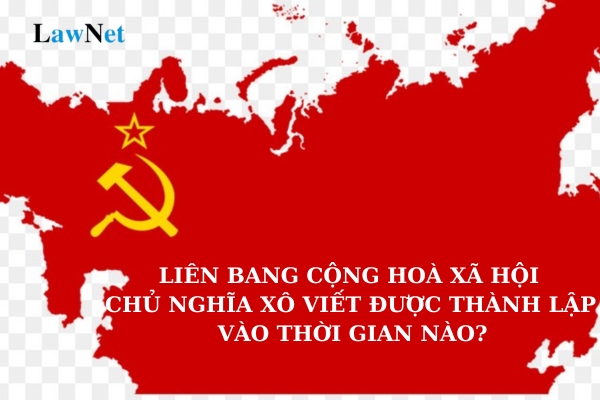When was the Union of Soviet Socialist Republics established? What are required standards for students in Vietnam in the subject of History?
When was the Union of Soviet Socialist Republics established?
The Union of Soviet Socialist Republics (Soviet Union or USSR) was established on December 30, 1922. This event took place in Moscow during the First Congress of Soviets of the Union, when representatives of the following four founding member republics signed the Treaty on the Creation of the Union:
-
Russian Soviet Federative Socialist Republic
-
Ukrainian Soviet Socialist Republic
-
Byelorussian Soviet Socialist Republic
-
Transcaucasian Soviet Federative Socialist Republic (consisting of Georgia, Armenia, and Azerbaijan)
* Significance of the event:
- Uniting the Soviet republics into a unified political, economic, and military bloc.
- Establishing a new power with a socialist ideology opposing Western capitalist countries.
- Creating a foundation for the development and expansion of the Soviet Union, which later grew to a total of 15 republics.
Thus, the Union of Soviet Socialist Republics was established on December 30, 1922, and existed for 69 years until its dissolution on December 26, 1991.

When was the Union of Soviet Socialist Republics established? What are required standards for students in Vietnam in the subject of History? (Image from the Internet)
What are required standards for students in Vietnam in the subject of History?
Based on Section VI of the General Education Curriculum for the subject of History promulgated with Circular 32/2018/TT-BGDDT (amended by Article 2 Circular 13/2022/TT-BGDDT), the requirements for the subject of History are defined as follows:
(1) Requirements for essential qualities and general competencies
The subject of History contributes to forming and developing essential qualities and general competencies at levels suitable to the subject and educational level as prescribed in the overall program.
(2) Requirements for specific competencies
The History curriculum helps students develop historical competencies based on fundamental and advanced knowledge of world, regional, and Vietnamese history through a system of themes and topics on political, economic, social, cultural, and civilizational history. Historical competencies include: understanding history; historical awareness and thinking; applying knowledge and skills learned.
Specific manifestations of historical competencies are presented as follows:
- Understanding history:
+ Identifying different types of historical materials; understanding their content, and utilizing historical materials in the learning process.
+ Reconstructing and presenting, in spoken or written form, the progression of events, figures, and historical processes from simple to complex; defining historical events in specific spaces and times.
- Historical awareness and thinking:
+ Explaining the origins and dynamics of historical events from simple to complex; indicating the development process of history in synchronous and chronological order; comparing similarities and differences among historical events, explaining the causal relationship in the historical progression.
+ Making personal remarks and evaluations on historical events, figures, and processes based on historical perception and thinking; understanding historical continuity and change; thinking in various directions when considering, evaluating, or searching for answers regarding a historical event, figure, or process.
- Applying knowledge and skills learned:
Drawing historical lessons and applying historical knowledge to explain practical issues of life; on this basis, having the capability to independently explore historical issues, developing creative competencies, capable of accessing and processing information from various sources, having the awareness and capacity for lifelong self-learning of history.
What are regulations on teaching equipment for the subject of History in Vietnam?
Based on Section VI of the General Education Curriculum for the subject of History promulgated with Circular 32/2018/TT-BGDDT (amended by Article 2 Circular 13/2022/TT-BGDDT) regulating teaching equipment for the subject of History:
- Using teaching equipment is one of the conditions for the success of innovating History teaching methods oriented towards competency development.
- Educational institutions need to have minimum teaching equipment such as: a system of maps (world map, continental maps, maps of Southeast Asia and Vietnam); historical pictures, diagrams, charts, with the support of technical means such as computers, projectors, televisions, radios, videos, various types of tapes, and discs...
- History is a subject with knowledge systems about the past that students cannot directly observe. Information technology supports historical reconstructions through documentaries, historical sources, images, videos... Teachers need to exploit and use basic functions of the Internet and computer software to incorporate images, sounds, historical materials into lessons, contributing to improving teaching effectiveness and inspiring students to love History.

